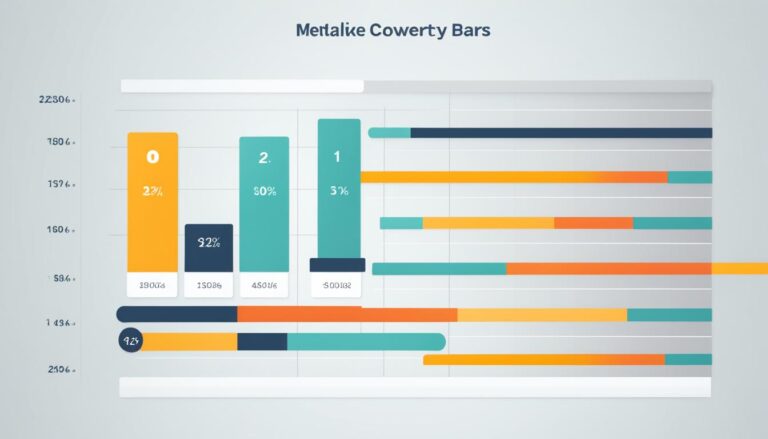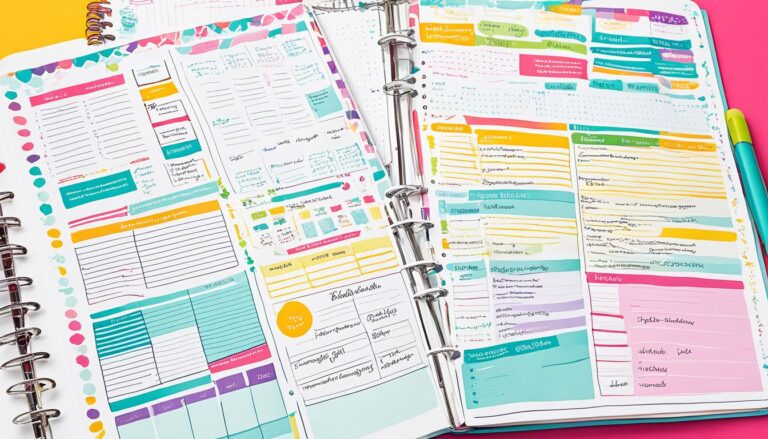Unlock Your Potential: What is Productivity in a Person

Have you ever wondered what sets highly productive people apart from the rest? How do they manage to accomplish so much while others struggle to stay on top of their to-do lists? The answer lies in understanding the concept of productivity in a person.
Productivity in a person goes beyond simply being busy or checking off tasks. It encompasses the ability to efficiently and effectively utilize time, resources, and energy to achieve desired outcomes. It’s about maximizing output while minimizing wasted effort. But what exactly does it mean to be productive, and how can it be achieved?
In this article, we will delve into the definition of productivity in a person and explore strategies to enhance personal productivity. Whether you’re striving for professional success or looking to improve your personal life, understanding and harnessing productivity can be a game-changer.
Key Takeaways:
- Productivity in a person involves efficiently accomplishing tasks and achieving goals.
- It requires managing time, resources, and energy effectively.
- Setting clear goals and priorities is essential for unlocking productivity potential.
- Effective time management techniques can improve focus and reduce distractions.
- Achieving work-life balance and managing stress are critical for maintaining productivity.
Setting Goals and Priorities
Setting goals is a crucial step in unlocking your productivity potential. It provides a clear direction, motivates you, and helps you prioritize your tasks. When setting goals, it is important to make them Specific, Measurable, Attainable, Relevant, and Time-bound (SMART). By breaking down larger goals into smaller, manageable ones, you can stay focused and track your progress. Writing down your goals and regularly reviewing and adjusting them is also important for maintaining productivity and staying on track.
When you set goals, you give yourself something to strive for. It’s like having a destination in mind before setting off on a journey. Without goals, you are simply moving without a sense of purpose. By setting clear goals, you provide yourself with a roadmap to success.
Let’s take a look at each element of SMART goals:
- Specific: Be clear and specific about what you want to achieve. Instead of setting a vague goal like “Get in shape,” specify “Lose 10 pounds in 3 months.”
- Measurable: Set goals that can be measured, so you can track your progress. Instead of saying “Get better at marketing,” set a goal like “Increase website traffic by 20% in 6 months.”
- Attainable: Make sure your goals are realistic and achievable. Setting goals that are too far out of reach can lead to frustration and demotivation.
- Relevant: Align your goals with your long-term vision and values. Ensure they are meaningful to you and contribute to your overall growth and success.
- Time-bound: Set a deadline for your goals. This creates a sense of urgency and helps you stay focused and committed.
By following the principles of SMART goals, you are setting yourself up for success. It allows you to break down your goals into actionable steps, making them more manageable and attainable. Let’s visualize the process:
| Goal | Action Steps | Timeline |
|---|---|---|
| Start a blog | 1. Choose a niche 2. Set up a website 3. Create content 4. Promote blog |
Start within a month Complete website setup in 2 weeks Consistently publish content Promote on social media regularly |
| Learn a new language | 1. Enroll in a language course 2. Practice vocabulary daily 3. Have conversations with native speakers 4. Watch movies with subtitles |
Enroll within 2 weeks Study and practice daily Start conversations within a month Regularly watch movies with subtitles |
Breaking down your goals into action steps and assigning timelines helps you stay organized and focused on achieving each milestone. It also allows you to celebrate small wins along the way, providing you with the motivation to keep going.
Remember to regularly review and adjust your goals as needed. Life is dynamic, and priorities may change. By keeping your goals updated, you ensure they remain relevant and reflect your current aspirations and circumstances.
By setting goals and priorities, you provide yourself with a roadmap to success. It gives you a sense of purpose and direction, motivating you to take action. Whether it’s in your personal or professional life, goal setting is an integral part of unlocking your productivity potential and achieving your dreams.

Effective Time Management
Effective time management is the key to maximizing your productivity. By prioritizing tasks based on urgency and importance, you can stay focused on what truly matters. One popular technique to enhance productivity is time-blocking, where you allocate specific time slots for specific tasks. This helps you improve concentration and minimize distractions, allowing you to work more efficiently.

Another valuable time management technique is the Pomodoro technique. This method involves working in focused 25-minute intervals, known as Pomodoros, followed by short breaks. This structured approach can help you maintain a high level of productivity while preventing burnout.
To make the most of your time, it’s crucial to minimize distractions. Turn off notifications on your devices, create a clutter-free work environment, and establish boundaries. By eliminating interruptions, you can fully concentrate on the task at hand and complete it more efficiently.
Time Management Tips:
- Make a to-do list and prioritize tasks based on urgency and importance.
- Use a time-blocking technique to allocate dedicated time slots for different tasks.
- Try the Pomodoro technique to work in focused intervals and boost productivity.
- Minimize distractions by turning off notifications and creating a conducive work environment.
| Key Benefits of Effective Time Management |
|---|
| Increased productivity |
| Improved focus and concentration |
| Reduced stress and burnout |
| Achievement of goals and deadlines |
| Enhanced work-life balance |
Achieving Work-Life Balance
Achieving a healthy work-life balance is crucial for maintaining productivity and well-being. In today’s fast-paced world, it’s essential to set clear boundaries between work and personal life to avoid excessive work-related stress and burnout.
To prioritize self-care and maintain a balanced lifestyle, consider the following strategies:
1. Set Boundaries
Establishing boundaries between work and personal life is vital for achieving work-life balance. Determine specific hours for work and stick to them. Communicate these boundaries to your colleagues and avoid checking work-related emails or messages outside of these designated hours. By setting boundaries, you can create a clear separation and ensure that personal time is fully dedicated to relaxation and rejuvenation.
2. Prioritize Self-Care
Make yourself a priority by incorporating self-care activities into your routine. Engage in activities that bring joy and relaxation, such as exercise, hobbies, or spending quality time with loved ones. Taking care of your physical and mental well-being is essential for recharging and maintaining productivity.
3. Take Time Off
Don’t underestimate the importance of taking regular breaks and using your vacation days. Allow yourself time to rest and rejuvenate, away from work responsibilities. Taking breaks can help prevent burnout and improve overall productivity when you return. Remember, even a short getaway or staycation can significantly contribute to your work-life balance.
4. Learn to Say No
Learning to say no is an important skill in maintaining work-life balance. Evaluate your commitments carefully and don’t take on more than you can handle. Prioritize tasks and take on only those that align with your goals and values. By saying no to non-essential tasks or commitments, you can avoid overload and create space for activities that enhance your well-being.
By implementing these strategies, you can achieve a healthy work-life balance, leading to increased productivity, satisfaction, and overall well-being.

| Benefits of Work-Life Balance | Consequences of Imbalance |
|---|---|
|
|
Managing Stress and Building Resilience
Stress management is crucial for maintaining productivity and personal well-being. In today’s fast-paced world, it’s easy to get overwhelmed by the demands of work and personal life. However, by implementing effective stress management techniques and prioritizing self-care, you can effectively manage stress and maintain high levels of productivity.
The Power of Mindfulness
Mindfulness is a powerful practice that can help reduce stress and improve focus. By engaging in techniques such as meditation and deep breathing, you can cultivate a state of present moment awareness and gain better control over your thoughts and emotions. Take a few minutes each day to sit quietly and focus on your breath, allowing yourself to let go of stress and tension.

The Importance of Taking Breaks
While it may seem counterintuitive, taking regular breaks throughout the day can actually enhance your productivity. Studies have shown that short breaks can increase focus and prevent mental fatigue. Set aside specific times during your workday to step away from your desk, stretch your legs, or engage in a brief relaxation exercise. These breaks will rejuvenate your mind and help you return to your tasks with renewed energy.
Make Self-Care a Priority
When managing stress, it’s important to prioritize self-care activities that nurture your physical, mental, and emotional well-being. Engaging in regular exercise, getting enough sleep, and eating nutritious meals are all essential for maintaining optimal health and resilience. Additionally, make time for activities that bring you joy and relaxation, such as spending time with loved ones, pursuing hobbies, or enjoying nature.
Setting Realistic Expectations
Setting realistic expectations for yourself and others is key to managing stress and avoiding burnout. Be honest about what you can realistically accomplish in a given timeframe and take on only what you can handle. Learn to say no to non-essential tasks and commitments that may add unnecessary pressure. By setting reasonable expectations, you can reduce stress and maintain a healthier work-life balance.
Built Resilience through Stress Management
By implementing stress management techniques and prioritizing self-care, you can build resilience and effectively navigate the challenges of daily life. Resilience enables you to bounce back from setbacks, adapt to change, and maintain a positive outlook even in the face of adversity. Prioritizing your well-being will not only enhance your productivity but also contribute to your long-term success and fulfillment.
| Stress Management Techniques | Benefits |
|---|---|
| Mindfulness meditation | Reduces stress and improves focus |
| Deep breathing exercises | Calms the mind and promotes relaxation |
| Taking regular breaks | Increases focus and prevents mental fatigue |
| Prioritizing self-care | Nurtures overall well-being and resilience |
| Setting realistic expectations | Reduces stress and prevents burnout |
By incorporating these stress management techniques into your daily routine and prioritizing self-care, you can effectively manage stress and maintain high levels of productivity. Remember, managing stress is not only essential for your well-being but also helps unlock your full potential and achieve success in all areas of life.
Conclusion
Productivity is the catalyst for personal growth and the key to unlocking your true potential. By understanding the concept of productivity and implementing effective strategies, you can achieve your goals, maintain a harmonious work-life balance, and effectively manage stress.
Setting clear and specific goals provides you with a sense of direction and motivation, while efficient time management allows you to prioritize tasks and maximize your output. Prioritizing self-care activities and establishing boundaries between work and personal life are crucial for maintaining a healthy balance and preventing burnout. By managing stress through mindfulness practices and realistic expectations, you can build resilience and overcome challenges.
Incorporating these strategies into your daily life will help you unlock your full potential and lead a fulfilling and successful life. Remember, productivity is not just about doing more, it’s about doing what truly matters. Embrace the power of productivity and embark on a journey of personal growth, achieving your goals, and nurturing both your professional and personal well-being.
FAQ
What is productivity in a person?
Productivity in a person refers to their ability to efficiently and effectively accomplish tasks and achieve their goals. It involves managing time, resources, and energy in a way that maximizes output and minimizes wasted effort.
How can setting goals and priorities enhance productivity?
Setting goals provides a clear direction, motivates individuals, and helps them prioritize their tasks. By making goals Specific, Measurable, Attainable, Relevant, and Time-bound (SMART), individuals can stay focused and track their progress.
What are some effective time management strategies?
Prioritizing tasks based on urgency and importance, time-blocking, and using techniques like the Pomodoro technique (working in intervals with short breaks) can improve focus and reduce distractions. Minimizing distractions and creating a conducive work environment also play a critical role in effective time management.
How can I achieve a work-life balance?
Setting clear boundaries between work and personal life, prioritizing self-care, making time for activities that bring joy and relaxation, taking regular breaks, using vacation days, and learning to say no to non-essential tasks and commitments are all important for maintaining a work-life balance.
How can I manage stress and build resilience?
Practicing mindfulness through techniques like meditation and deep breathing, taking regular breaks, prioritizing self-care activities, setting realistic expectations, and avoiding overcommitment help in managing stress and building resilience.
How can productivity benefit personal growth and success?
By understanding the concept of productivity and adopting strategies to enhance it, individuals can achieve their goals, maintain a healthy work-life balance, effectively manage stress, and unlock their full potential for personal growth and success.






